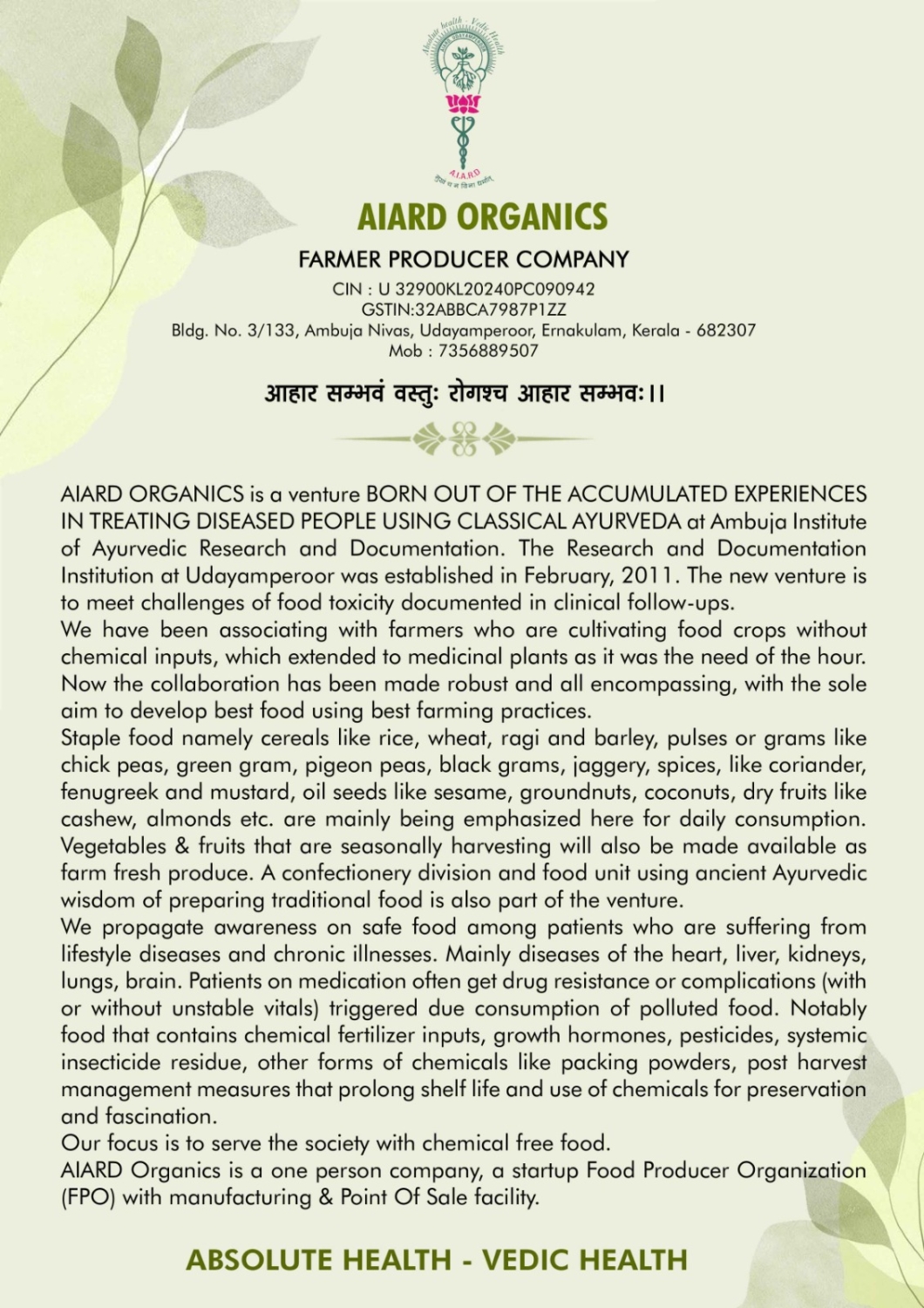AIARD Organics (OPC) private limited
CIN: U 32900KL2024OPC90942
Address: Ambuja nivas, Udayamperoor, Ernakulam, Kerala
E-mail: aiardorganics@gmail.com
Packaged and processed foods being marketed in modern world are the major cause of diseases that decrease lifespan. Majority of doctors in all the treatment systems are ignoring this fact and prescribing medicines without proper instructions to regulate Ahara-Vihara (food and activities) due to misled academy. All the lifestyle diseases and life threatening complications are found to originate or triggered by the use of manmade chemicals revolution for preserving food, fascinated in terms of smell, colour and comfort (ease of consumption).
AIARD Organics is trying to meet the challenge and trying to sell 100% organically grown raw materials for food, non-plastic commodities & cosmetics through contract farming as a one person company.
The following items are made available:
a) Vegetables and fruits.
b) Grains, millets, grams, pulses, rice, wheat.
c) Jaggery, honey, coconut powder, ghee, spices, flours, salt, coconut oil, sesame oil, castor oil, ground nut oil.
d) Daily requirements like tooth powder, face pack, hair oil, thaalippodi, comb, mosquito repellent, herbal powder for daily drink, daily drink for diabetes, wooden pen, after shave, perfumes, and room freshener grass root oil, herbal powder for air purification, mouth freshener.
e) Food and beverages: coffee powder, tea, butter, Indian traditional sweets, pickles, mixture, chips, nuts, Chyavanaprasham.
f) Daily herbal supplements – kannankaya for infants, food supplements for children from 1 to 13 years of age.
g) Consumables, wooden utensils, wooden vegetable cutting board, wooden pen stand, chappals with ramacham.
h) Cosmetics: kanmashi, sindhooram, rudraksha maala.

AIARD
Udayamperoor, Thrippunithura,
Ernakulam, Kerala 682307
Phone: 0484 – 2792310
Mobile: 9447331435
ambujaclinic@gmail.com
Office Hours
Mo-Su: 10:00 am – 5:00 pm
OP Time
Thu – Su : 10:00 am – 5:00 pm
